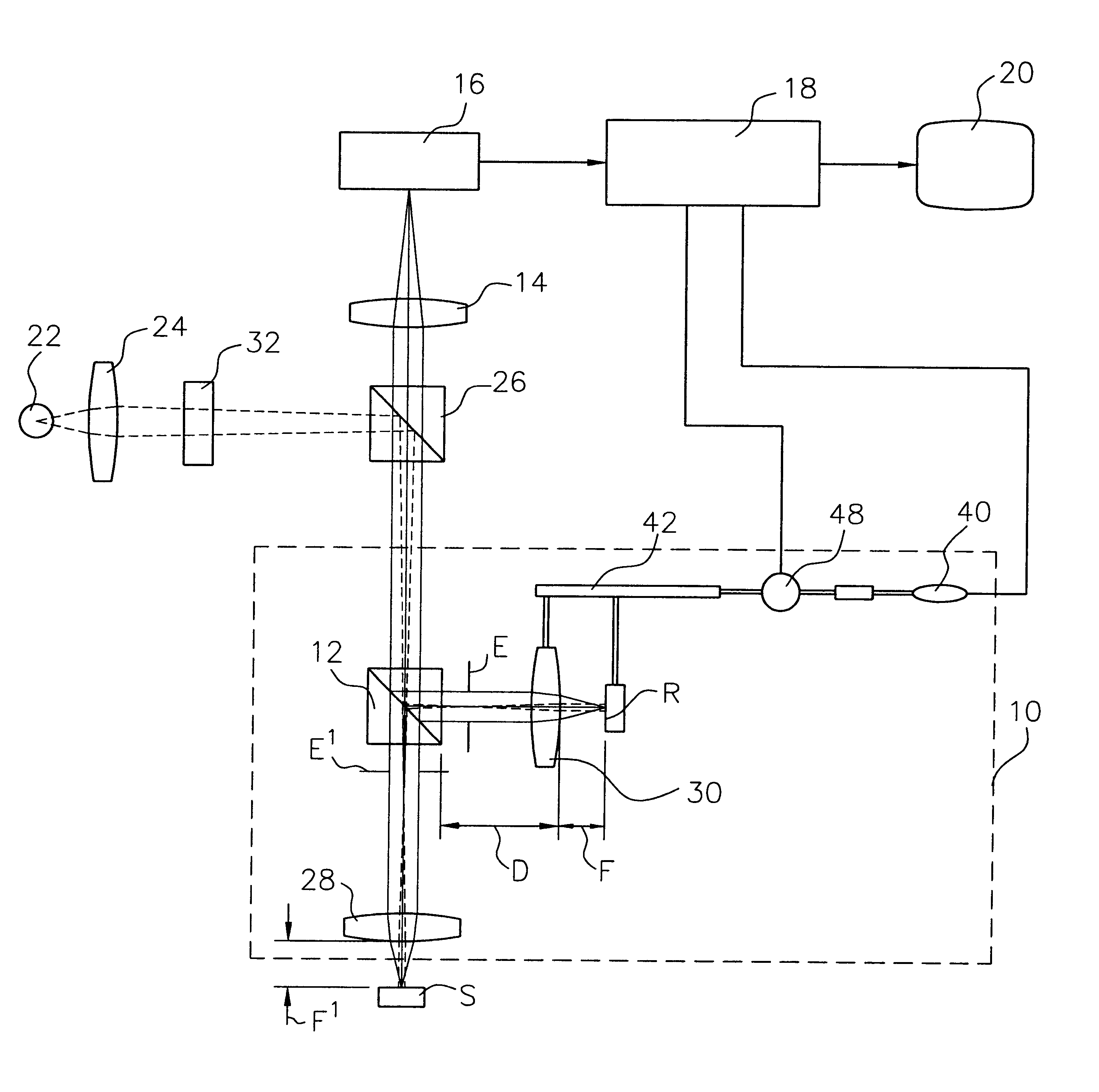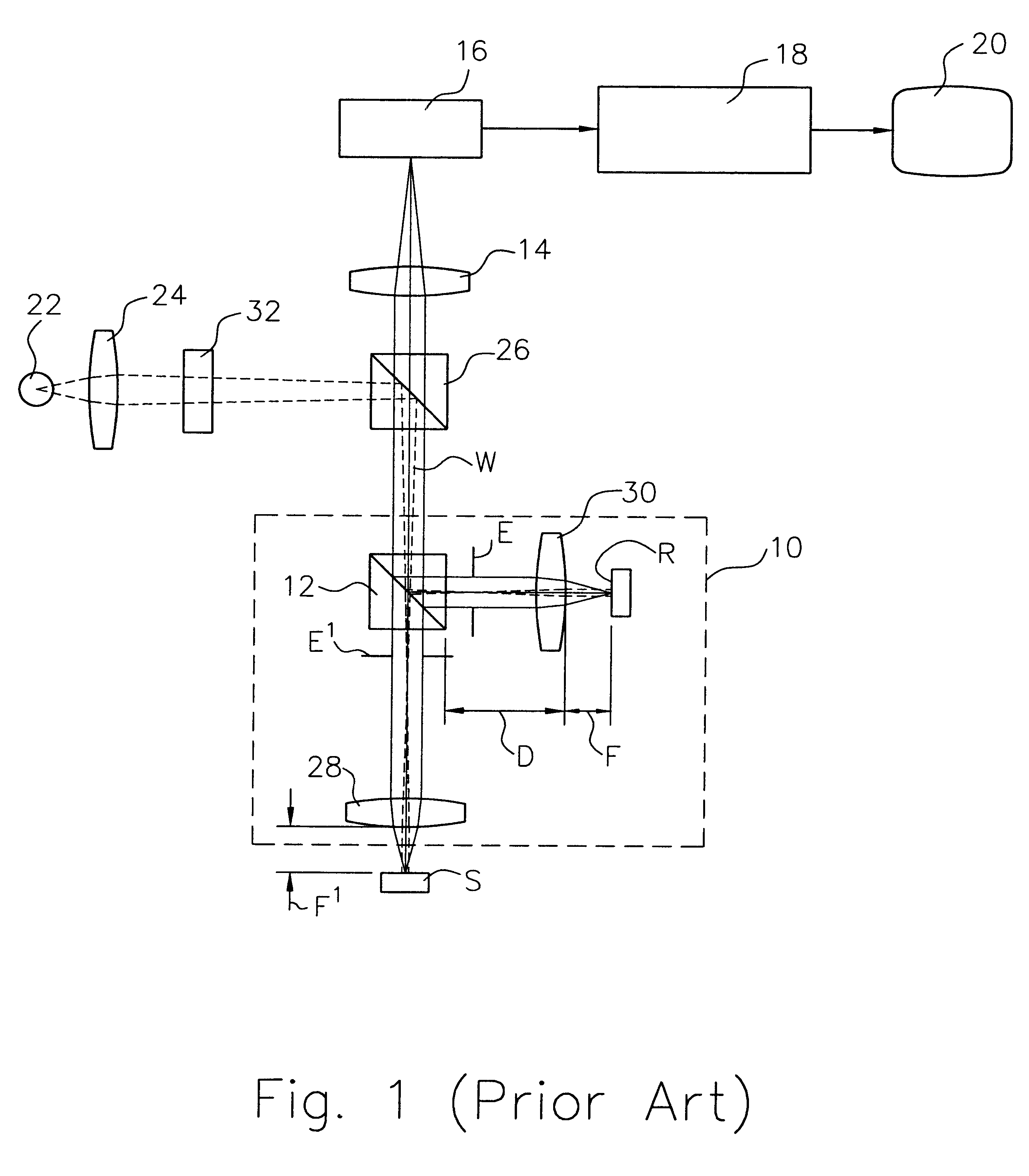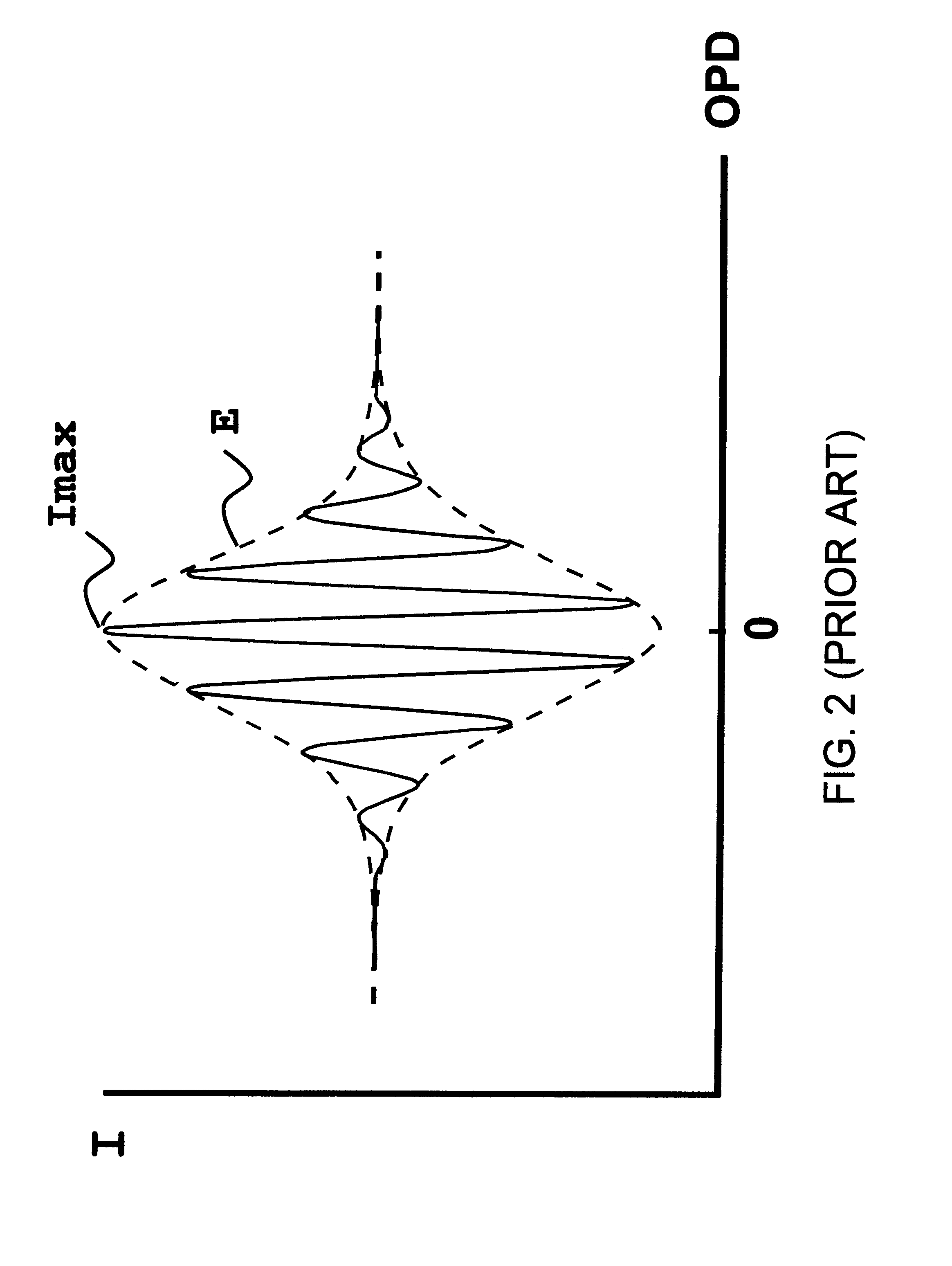Automated minimization of optical path difference and reference mirror focus in white-light interference microscope objective
- Summary
- Abstract
- Description
- Claims
- Application Information
AI Technical Summary
Benefits of technology
Problems solved by technology
Method used
Image
Examples
Embodiment Construction
The present invention is based on the idea of maximizing fringe modulation or the spatial variation of fringe modulation in order to minimize the optical path difference between the reference path and the test path of a white-light interference objective in a white-light Linnik interferometer. The approach makes it possible to automate the process and optimize the quality of the resulting PSI or VSI profiling measurements. For the purposes of this disclosure, the term white light is intended to refer to any broad-bandwidth light such as produced by halogen lamps, arc lamps, and LEDs, which are often also filtered to reduce the bandwidth to a particular wavelength range of interest. In the examples described below, white light filtered to a 40-nm bandwidth with about 600-nm center wavelength was used. The reference symbols F, D, and F' are used to refer (as also defined above) to the distances between reference mirror and reference optics, reference optics and microscope splitter, an...
PUM
 Login to View More
Login to View More Abstract
Description
Claims
Application Information
 Login to View More
Login to View More - R&D
- Intellectual Property
- Life Sciences
- Materials
- Tech Scout
- Unparalleled Data Quality
- Higher Quality Content
- 60% Fewer Hallucinations
Browse by: Latest US Patents, China's latest patents, Technical Efficacy Thesaurus, Application Domain, Technology Topic, Popular Technical Reports.
© 2025 PatSnap. All rights reserved.Legal|Privacy policy|Modern Slavery Act Transparency Statement|Sitemap|About US| Contact US: help@patsnap.com



